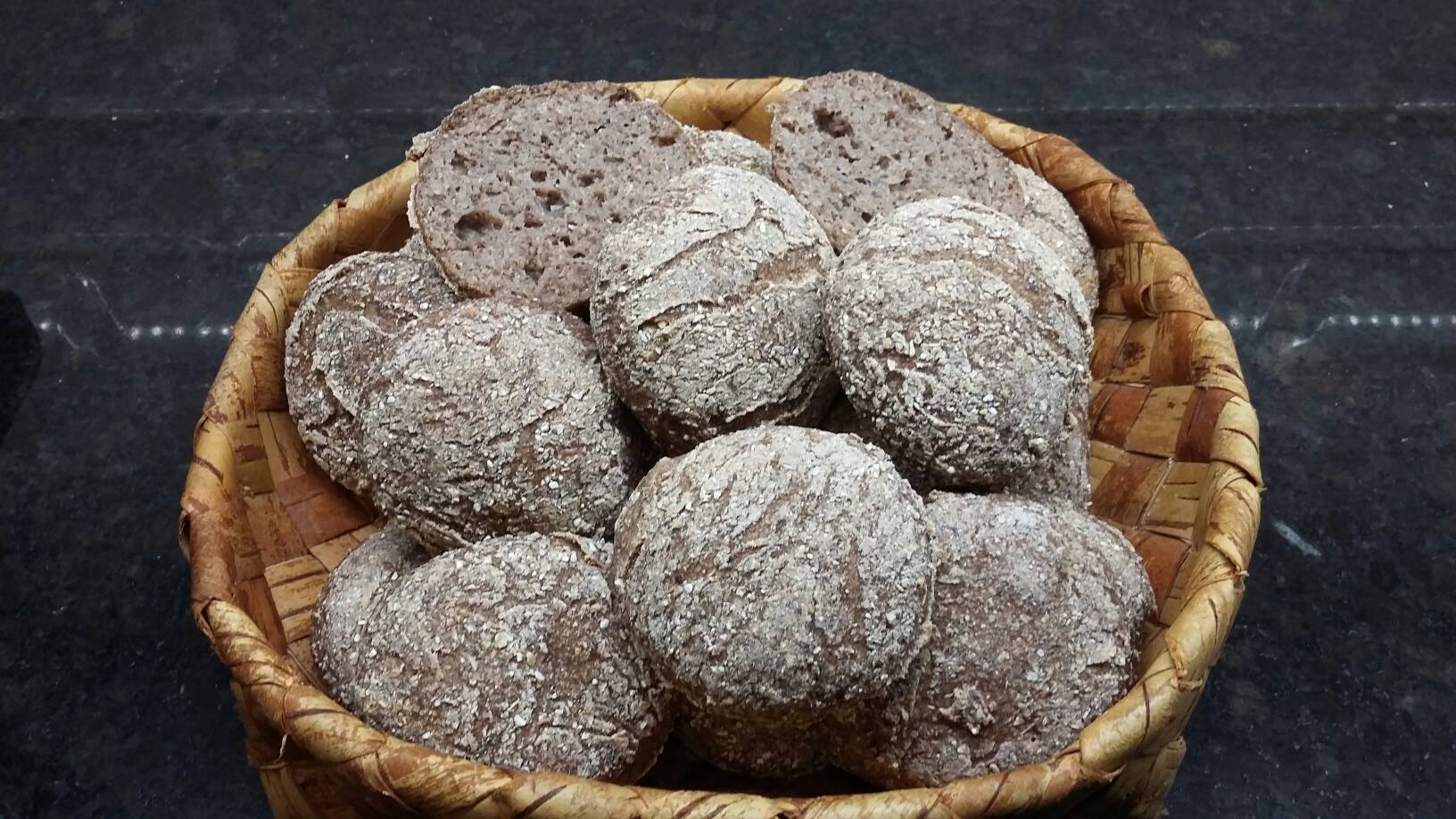Home page " Gluten-free recipes " gluten-free Buckwheat and Sourdough Breads
Gluten-free buckwheat and sourdough bread
Published on
Gluten-free buckwheat and sourdough bread
Recipe by Virtasalmen Viljatuote Oy
Cooking time
15
minutesHairless
Ingredients
1,5 l water
just from the previous dough or e.g. a slice of sourdough bread
7,5 dl Gluten-free coarse buckwheat flour from Virtasalmi Cereal Products
1-1,5 tbsp sea salt
2 dl Virtasalmi's Grain Product Gluten Free Dark Whole Grain Rice Flour
2dlluten-free dark wholegrain teff flour or Gluten-free Corn Flour fromVirtasalmi's Cereal Product
for baking: gluten-free buckwheat flour or Finnish buckwheat flour
Preparation
- Measure the water, buckwheat flour and root into a bowl.
- Cover the container with a clean cloth or lid, but do not close the lid tightly.
- Allow to ferment for ½-1 day.
- Bubbles will rise from the bottom of the finished root vegetable when you stir it.
- Mix the rest of the ingredients together and add the mixture to the dough a little at a time.
- The dough remains very loose at first, but firms up as the psyllium swells.
- Let the dough rise for at least a couple of hours. A longer rising time is not a problem.
- Using floured hands, spread the dough on a baking tray to a sheet about 1-1.5 cm thick and use a drinking glass or a round mould to make loaves of dough.
- Remember to take a "fist-sized" one just in the freezer for the next baking session.
- Let the bread rise for half an hour before baking.
- Bake in a 250 degree oven for about 15-20 minutes.
- Store the loaves in an airtight container or freeze them to prevent the bread's high moisture content from moulding.
- The best time to bake sourdough bread without yeast is around the full moon.
- Time and time again, the dough root is refined and improved.


Is the name deliberately 'evil' breadsticks? Or have the letters got mixed up and the name was supposed to be sourdough breads? The name 'evil' loaves is certainly funny. 🙂
😀 Hi! Thanks for noticing.
You can also roll the root ball thin and dry it, that's how it was done in the old days, the root will be better and stronger ..remember to turn it in a dry place, don't put plastic on top or underneath..if you have a grate it's great for drying the root, of course it's noticeable that soaking the root is desirable when reusing it, but in the same root water it melts..remember to dry the root bread..so that it's crispy when you cut it..
Hi Anni!
This is indeed another way to save them for the next baking session. Thanks for the tip!
Mariia from Virtasalmen Viljatuotes